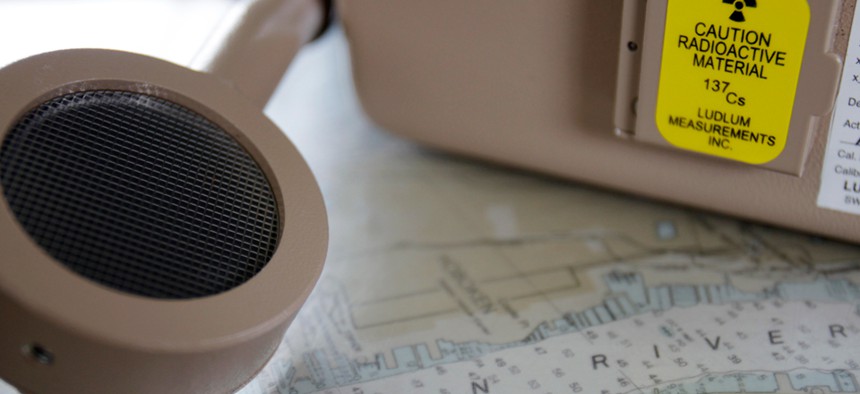Pentagon Funds Development of New Tech for Detecting 'Dirty Bombs'
Most current detection systems rely on helium 3, which is rare.
With its supply of helium running out, the Pentagon is funding research into alternative methods for detecting the presence of possible "dirty bombs."
Helium 3 gas is employed in most of the nuclear-detection systems in use today. The rare substance is currently produced as a byproduct of the radioactive decay of tritium, a material used in nuclear warheads. As helium 3 is collected from aging warheads, the supply of the gas has dwindled as the U.S. nuclear arsenal has grown smaller.
That has prompted the Pentagon's Defense Threat Reduction Agency to seek out promising new technologies that can supplant the use of helium 3 in detection devices, which are used to find radiological substances. Officials fear that attackers could pair these substances with conventional explosives to disperse harmful radiation across a wide area.
To that end, the agency has awarded a $2.8 million contract to Alion Science and Technology of McLean, Va., to further its research into a next-generation detection system that utilizes bundles of thin copper tubes coated with boron, according to a Monday company press release.
The current generation of helium 3-powered detectors can alert authorities to the presence of a nearby radioactive source, but these systems cannot determine the direction from which the radiation is coming. Alion plans to use its Pentagon funding to give its boron-coated "straw" sensors the ability to pinpoint the direction of a source.
"By researching the means to make the boron-coated straw detector more precise and more reasonable to produce, Alion can help [the Defense Threat Reduction Agency] employ improved technologies to mitigate threats effectively and keep warfighters and citizens safe," company senior vice president Terri Spoonhour said in a released statement. "But, beyond providing a drop-in replacement for He-3 detector components, this engineering effort opens up a number of possibilities for new or enhanced portable systems that can be carried into questionable areas or permanently installed to protect ports and depots."




